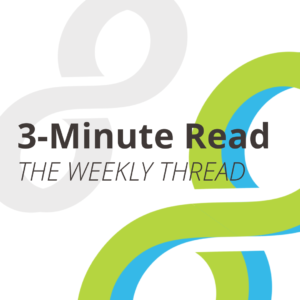Optimizing Impact: Assessing Innovation Ecosystems
 June 26, 2023 — In today’s rapidly evolving R&D landscape, being part of a blossoming innovation ecosystem holds significant appeal. Often anchored by one or more universities or knowledge centers such as a national lab, innovation ecosystems leverage local business and educational strengths to strategically maximize economic, technological, and societal impact while cultivating a culture of progress and collaboration.
June 26, 2023 — In today’s rapidly evolving R&D landscape, being part of a blossoming innovation ecosystem holds significant appeal. Often anchored by one or more universities or knowledge centers such as a national lab, innovation ecosystems leverage local business and educational strengths to strategically maximize economic, technological, and societal impact while cultivating a culture of progress and collaboration.
Innovation ecosystems are as unique as their communities. To ensure that these potential economic engines can thrive, stakeholders and organizations must take on the front-end due diligence to appraise the components, understand their multi-faceted implications, impartially assess current strengths and areas for improvement—and commit to ongoing assessment.
Building unique ecosystems
Silicon Valley’s prodigious high-tech output today is built on a 50-year foundation of academic innovation, venture capital investment, and torrential entrepreneurial activity that blossomed into some of the world’s biggest corporations. It’s not hard to find organizations that want to be a part of an exciting innovation ecosystem like that, but it’s important to level-set and discover your community’s innovation sweet spot.
Location plays heavily into the development of innovation ecosystems not only because of the who—local stakeholders–but also because of the what—local resources. Assess the region and consider how people, partnerships, technology, and intellectual capital can be marshaled to address a major R&D challenge with economic growth potential. What makes the location of the ecosystem unique is also what will ultimately lend itself to making it efficient and impactful. Objective assessment is critical to identify unique assets and defining characteristics and to ensure resources are directed appropriately to increase efficiency and impact.
Data-driven assessment
Ecosystem assessment isn’t a one-and-done process; building in ways to benchmark and objectively assess progress is key to continued growth. By collecting data on research output, entrepreneurial activity, funding sources, workforce development, and other elements, stakeholders gain valuable insight into the workings of the innovation ecosystem that help identify areas for improvement. For example, Elsevier published a report in 2022 on Amsterdam as a center for knowledge and innovation. The report used Elsevier’s Research Intelligence portfolio of products and services specifically developed to analyze research productivity and inform strategy. The report measured research output and Amsterdam’s economic development strengths—in particular, key research areas, who was publishing, where the research happened, and the field-weighted citation impact. The report highlighted artificial intelligence as a high-impact research area for Amsterdam, as well as how the city ranked in sustainable development, international collaboration, knowledge transfer, and technological strength.
This same methodology can be applied to new and existing innovation ecosystems to identify potential areas to magnify impact. Data can also uncover adjacent R&D areas that are not as strong, but with focused effort, could improve and enhance the overall ecosystem. The Amsterdam report, for example, points to an opportunity to involve international co-authors in more publications and expand university-industry collaboration for greater impact.
Why it matters
University-industry partnerships (many times in collaboration with governments and nonprofits) are integral to innovation ecosystems. As the world continues to become more and more interconnected, innovation ecosystems will continue to appear across the globe. By learning what to assess and examples for doing so, institutions can ensure they leverage their own assets to contribute to their local innovation ecosystem to maximize technological and societal impact. Existing partnerships can also be leveraged to assess innovation ecosystems, both in identifying strengths and weaknesses and disseminating the findings to strengthen the ecosystem and the collaborative ties between its stakeholders.
We want to hear from you. How else can we assess innovation ecosystems to ensure their continued success? Let us know on our LinkedIn profile.


